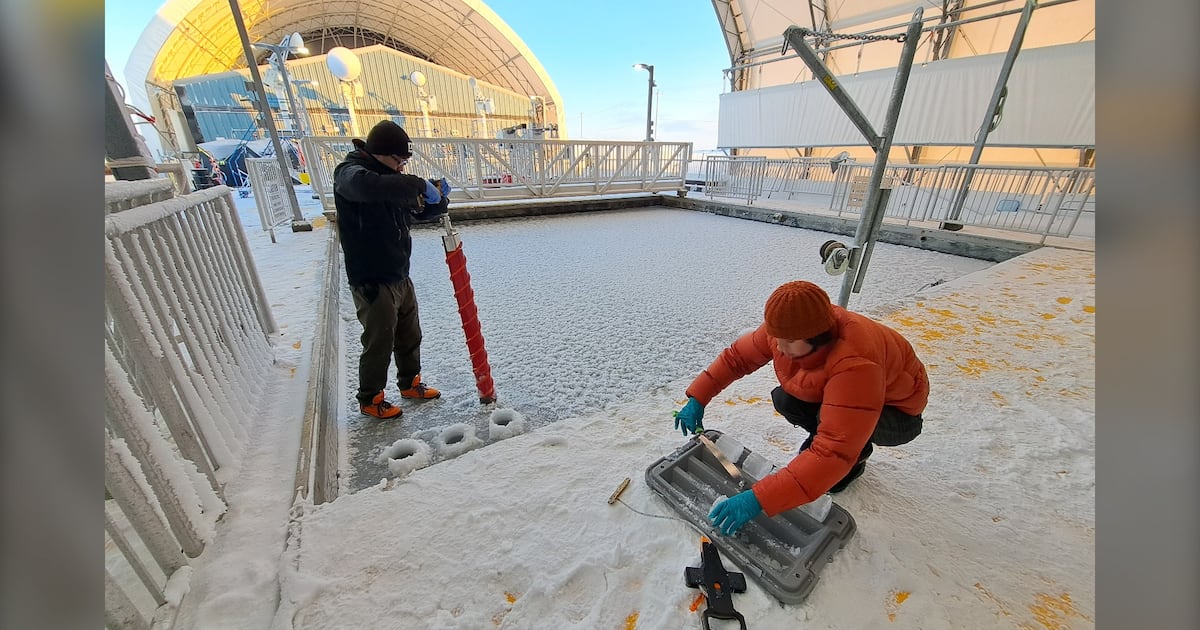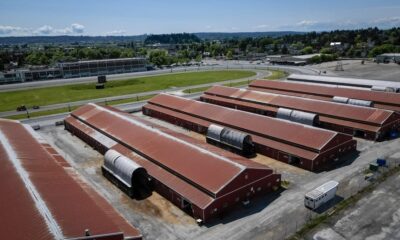Science
Manitoba’s Churchill Marine Observatory Marks One Year of Research

A multidisciplinary research facility in Churchill, Manitoba, is celebrating its one-year anniversary, marking a significant milestone in Arctic science. The Churchill Marine Observatory (CMO), which officially opened on August 27, 2024, aims to address complex environmental questions with profound socioeconomic implications. Dr. Feiyue Wang, the project lead and a professor at the University of Manitoba, emphasized that the CMO has positioned Manitoba as a key player in marine research.
The CMO, which cost approximately $45 million to establish, enables a wide range of studies by allowing seawater from the Hudson Bay and the mouth of the Churchill River to be drawn into the facility. This unique setup permits experimental research on the rapidly changing environment of the Hudson Bay region. Dr. Wang stated, “This kind of arrangement allows us to do experimental studies, to study different scenarios as the Hudson Bay environment areas are going through rapid change.”
The facility is equipped for various studies, including risk reduction and mitigation strategies. One of the primary focuses is understanding how to better respond to potential oil spills in the region. Additionally, the CMO facilitates research on freshwater and its effects on the marine ecosystem in Hudson Bay.
Innovative Research Tools and Projects
The CMO features strings moulded to the seafloor of the Churchill River and Hudson Bay, embedded with numerous sensors. These sensors enable researchers to monitor both physical and biological properties of the water, providing critical data for ongoing studies. Complementing this infrastructure is the research vessel William Kennedy, which enhances mobility for sampling and monitoring activities.
While many projects are still in progress, Dr. Wang noted that the CMO supported three significant research initiatives from November 2024 to February 2025. One of these projects examined the initial stages of thin ice formation and involved collaboration with researchers from Denmark. Another study investigated the ability of natural microorganisms to degrade oil in ice-covered waters, a vital area of research in the event of an oil spill. Dr. Wang mentioned that data from this study is currently being analyzed, with plans for its continuation in the coming winter.
Community Engagement and Future Directions
Looking ahead, Dr. Wang expressed a strong desire to increase participation from Indigenous researchers and local community members. He highlighted the importance of involving those who call the region home, stating, “Folks who live there, who call that region home, are the ones who are going to be more invested in it.” He noted that a full-time technician at the CMO is from the northern town, underscoring the facility’s commitment to community engagement.
Dr. Wang aims to enhance the involvement of local residents in the research direction of the CMO. “We’ve already incorporated (that) to some extent, but I’d like to see that really become more prominent in the overall research direction of the CMO,” he added. As the observatory continues to advance Arctic science, its emphasis on collaboration with local communities may lead to more nuanced and impactful research outcomes.
-

 Science1 week ago
Science1 week agoMicrosoft Confirms U.S. Law Overrules Canadian Data Sovereignty
-

 Technology1 week ago
Technology1 week agoGoogle Pixel 10 Pro Fold Specs Unveiled Ahead of Launch
-

 Technology1 week ago
Technology1 week agoWorld of Warcraft Players Buzz Over 19-Quest Bee Challenge
-

 Science1 week ago
Science1 week agoXi Labs Innovates with New AI Operating System Set for 2025 Launch
-

 Science5 days ago
Science5 days agoChina’s Wukong Spacesuit Sets New Standard for AI in Space
-

 Health5 days ago
Health5 days agoRideau LRT Station Closed Following Fatal Cardiac Incident
-

 Science1 week ago
Science1 week agoInfrastructure Overhaul Drives AI Integration at JPMorgan Chase
-

 Technology1 week ago
Technology1 week agoHumanoid Robots Compete in Hilarious Debut Games in Beijing
-

 Top Stories1 week ago
Top Stories1 week agoSurrey Ends Horse Racing at Fraser Downs for Major Redevelopment
-

 Lifestyle5 days ago
Lifestyle5 days agoVancouver’s Mini Mini Market Showcases Young Creatives
-

 Technology1 week ago
Technology1 week agoNew IDR01 Smart Ring Offers Advanced Sports Tracking for $169
-

 Technology1 week ago
Technology1 week agoFuture Entertainment Launches DDoD with Gameplay Trailer Showcase
-

 Science1 week ago
Science1 week agoNew Precision Approach to Treating Depression Tailors Care to Patients
-

 Technology1 week ago
Technology1 week agoGlobal Launch of Ragnarok M: Classic Set for September 3, 2025
-

 Technology1 week ago
Technology1 week agoInnovative 140W GaN Travel Adapter Combines Power and Convenience
-

 Business1 week ago
Business1 week agoNew Estimates Reveal ChatGPT-5 Energy Use Could Soar
-

 Technology5 days ago
Technology5 days agoDragon Ball: Sparking! Zero Launching on Switch and Switch 2 This November
-

 Health1 week ago
Health1 week agoGiant Boba and Unique Treats Take Center Stage at Ottawa’s Newest Bubble Tea Shop
-

 Business5 days ago
Business5 days agoCanadian Stock Index Rises Slightly Amid Mixed U.S. Markets
-

 Health5 days ago
Health5 days agoB.C. Review Urges Changes in Rare-Disease Drug Funding System
-

 Business1 week ago
Business1 week agoSimons Plans Toronto Expansion as Retail Sector Shows Resilience
-

 Business1 week ago
Business1 week agoUkraine Strikes Lukoil Refinery, Halting Operations Amid Conflict
-

 Lifestyle1 week ago
Lifestyle1 week agoEleven Madison Park to Reinstate Meat After Vegan Experiment
-

 Education5 days ago
Education5 days agoParents Demand a Voice in Winnipeg’s Curriculum Changes










